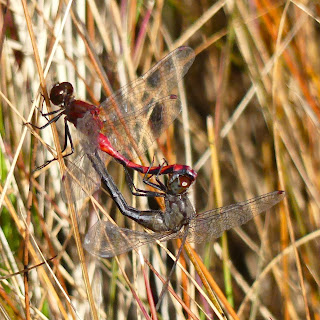This paddle location is great when you feel like visiting multiple habitats in one outing. In one day trip, you can explore the mainland’s shoreline, the sandhill shorelines (inside and gulf side), the marsh ABC islands, and a wetland creek. On October 4th, I started my paddle from Fitzgerald Road. Fitzgerald is the closest launch point to the ABC islands and Gains Creek. There are two other access points that are excellent for visiting this part of the Conway Narrows – Pete Con Road and Mickie Allan Shore Road.
 |
| Track, 12km, Conway Narrows & Gains Creek |
Since I started the paddle late in the morning, I headed straight to the sandhills for some exploring and lunch. Then, on the way back (after lunch), I did an excursion up Gains Creek to check for Bald Eagles, etc. On this trip, I had no time to go ashore on the ABC islands.
Note: With an earlier start (e.g. 9 am), it would be better to explore Gains Creek first, the ABC islands next, and then to the sandhills for lunch/walks.
 |
| Conway's B Island |
At my first stop before lunch, I did have time to explore a small spruce and bayberry grove on the sandhills. Usually, I find Savannah Sparrows in this kind of habitat, but today, it was a White-throated Sparrow hanging out in the stunted spruce trees.
 |
| Spruce grove on sandhill |
Bird sightings were pretty good on this trip. It included two species of Sparrows (White-throated and Song), a Sanderling shorebird (VU), and a young Bald Eagle along the shore of Gains Creek. Other nature sightings were posted to iNaturalist – Click HERE.
I would like to try this paddle in the spring to see if there would be a greater abundance of wildlife (e.g. birds, ducks, frogs, etc).



















































